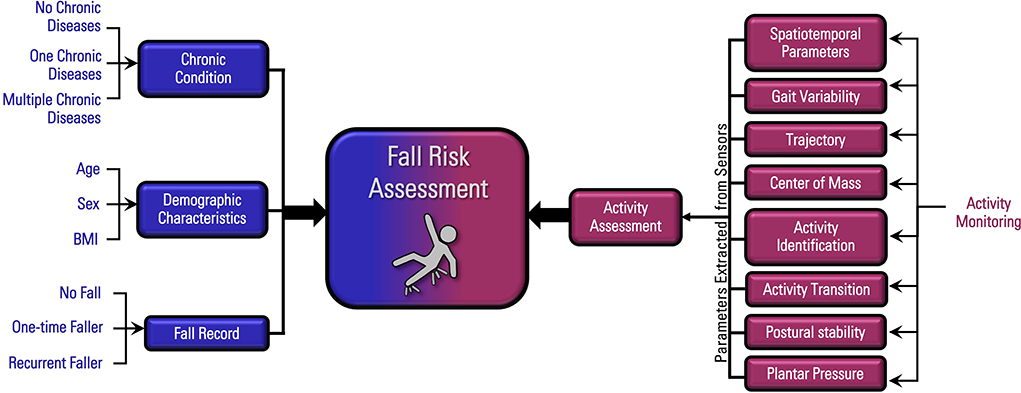Dementia Fall Risk Can Be Fun For Anyone
The Ultimate Guide To Dementia Fall Risk
Table of ContentsThe 7-Minute Rule for Dementia Fall RiskGetting My Dementia Fall Risk To WorkThe 15-Second Trick For Dementia Fall RiskSome Known Facts About Dementia Fall Risk.The smart Trick of Dementia Fall Risk That Nobody is Discussing
Nonetheless, based on signs and symptoms, such as evidence of head injury or a brand-new focal neurologic deficiency, calculated tomography or MRI of the mind might be indicated - Dementia Fall Risk. An evaluation for causes of syncope should be performed only if there is strong suspicion, as in the instance of persistent, unusual falls
Health care carriers utilize a loss danger assessment to identify your danger variables for falling and make helpful suggestions. An autumn risk assessment is vital due to the fact that knowing which elements boost your opportunities of dropping aids you: Reduce your risk of dropping or injuring on your own.
All adults 65 years and older must have an initial autumn threat testing. Have actually fallen in the past year. Worry concerning dropping.
The Only Guide to Dementia Fall Risk

Explore this thorough nursing care strategy and monitoring overview to successfully stop danger for falls among people. Obtain necessary expertise about the nursing evaluation, nursing diagnosis, and goals particularly tailored to individuals that are at risk for falls. A is specified as an occasion that causes a person coming to rest unintentionally on the ground or flooring or other reduced level (WHO, 2021).
Falling is the 2nd leading reason of fatality from unintended injuries internationally. It is estimated that fall death rates in the United state
What Does Dementia Fall Risk Do?
If this rate continues, the CDC expects 7 autumn deaths every hour by 2030.
Annually, over 800,000 patients are hospitalized as a result of falls. Nurses play a major role in stopping drops for their individuals via education and learning, examining fall threat, creating much safer settings, and offering treatments in protecting against injuries from drops. A number of threat factors and conditions add to drops, including the following:. Aged 65 years and older; lower arm or leg prosthesis; usage of assistive devices such as walker, crane, and wheelchair; living alone.
Individual will show careful avoidance steps. Patient and caregivers will certainly execute strategies to boost safety and security and stop drops in the home. Autumns result from several my response variables, and an all natural approach to the private and setting is essential. Suppose an individual is taken into consideration at high risk for drops after the testing.
The Buzz on Dementia Fall Risk
A requires using a validated tool that scientists have analyzed to be helpful in naming the reasons of falls in a person. The level of autumn risk can be determined using the assessment of innate and extrinsic elements.
Individuals are a lot more likely to drop site once again if they have maintained one or more falls in the previous six months. The older populace is at increased danger of fall-related readmissions based on a study recognizing the elements anticipating of repeat falls associated results (Prabhakaran et al., 2020).
Additionally, confusion and impaired judgment increase the individual's possibility of falling. The capability of individuals to protect themselves from drops is affected by such variables as age and advancement. Older people with weak muscular tissues are much more likely to fall than those that maintain muscular tissue toughness, adaptability, and endurance. These modifications consist of reduced visual function, damaged shade assumption, modification in facility of gravity, unsteady stride, decreased muscle mass stamina, lowered endurance, transformed deepness perception, and postponed response and response times.
The Best Guide To Dementia Fall Risk
Much less contrast level of sensitivity was rather connected with both enhanced rates of falls and other injuries, while decreased visual skill was just associated with enhanced fall price (Timber et al., 2011). Sensory understanding of environmental stimuli is paramount to safety. Vision and listening to disability limit the patient's capacity to regard risks in the surroundings.
Older grownups that have poor equilibrium or problem walking why not try here are most likely to drop. These troubles might be connected with lack of exercise or a neurological cause, joint inflammation, or other medical conditions and treatments. An essential threat element highlighted in a research study is that adults with rheumatoid joint inflammation are at high threat of falls, including inflamed and tender lower extremity joints, exhaustion, and usage of psychotropic medicines (Stanmore et al., 2013).